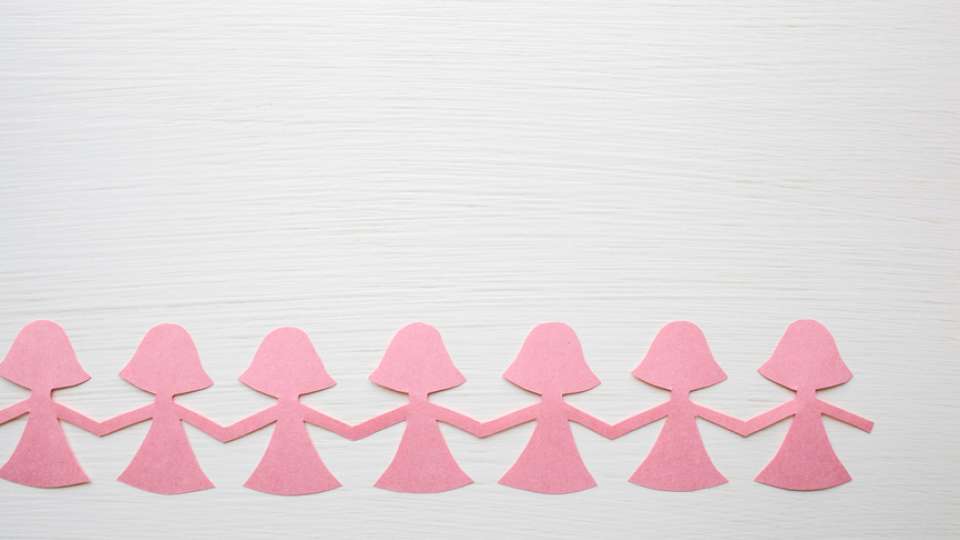
Diagnosing autism is tricky. There’s no test or questionnaire people can take, autism looks different in everyone, and sometimes symptoms overlap with conditions like obsessive-compulsive disorder (OCD) or anxiety.
Diagnosing autism in girls is even trickier. Many experts don’t even consider an autism diagnosis when girls are brought in to a doctor or psychologist’s office, says Sara Webb, Ph.D., a psychologist and associate professor of psychiatry and behavioral sciences at the University of Washington.
“We’ve asked mothers of girls with autism what diagnosis was like, and many said it was a struggle,” Webb says. “Clinicians were pushing back on the autism label and saying things like, ‘Your daughter is too pretty to have autism.’”
The gender divide
Current diagnostic criteria for autism outline two primary areas of impairment: Difficulty communicating and interacting socially, and displaying repetitive, obsessive behaviors for certain objects or routines.
Boys are diagnosed with autism about four times as often as girls, but no one knows if this is because autism truly is more prevalent in boys or because girls are being underdiagnosed. Since diagnostic criteria for autism were developed primarily around boys, they may not apply as well to girls, leading to girls getting overlooked or misdiagnosed with something like obsessive-compulsive disorder (OCD) or anorexia, says Patricia Matestic, Ph.D., a licensed clinical psychologist and director of the UW Autism Center in Tacoma.
If a girl does get the right diagnosis, it isn’t uncommon for it to happen later in childhood, even into adulthood. Gary Stobbe, M.D., a neurologist who practices at the Adult Autism Clinic at UW Medical Center-Roosevelt, says he is surprised by how many new patients at the clinic come in seeking a diagnosis. Many of them are women.
The gender divide narrows among individuals who fall in the lower-functioning part of the autism spectrum, which includes individuals with significant intellectual disability. Boys and girls are more equally represented within this group, says Matestic.
“We don’t know if that’s because we’ve missed diagnosing women or if there are truly fewer higher-functioning women with autism,” she says.
How autism looks different in girls and women
Whether because of biology, socialization or, most likely, a combination of the two, many girls and women with autism simply don’t have the same symptoms as boys and men—at least, not in the way experts are used to seeing.
Girls with autism may be more skilled than boys at handling social situations and communicating with others, possibly because girls are taught and expected to be more sociable and emotionally intelligent from a young age. But even if a girl with autism can function better socially than a boy, that doesn’t mean it’s easy.
She also notes that when girls reach an age where more is expected of them socially (middle school, anyone?), that’s often when their autism symptoms become more pronounced.
A fixation with specific rituals or objects is a hallmark of autism, but girls may not experience this. If they do, it’s more likely to be with something considered more socially acceptable—and therefore isn’t as noticeable.
“A girl with autism might be interested in Disney princesses or unicorns, whereas a boy might be interested in light switches or fans or something that is more obviously different,” Stobbe says.
People with autism are also at greater risk than the general population for health problems ranging from anxiety and mood disorders to immune conditions, seizures and diabetes. While there is currently no data on whether or not girls are at greater risk than boys, Matestic says, girls in general are known to have higher rates of some mental health problems like anxiety.
Some researchers also suspect brain differences influence autism rates and are a main reason why more boys than girls are diagnosed. Boys, after all, are at greater risk for most neurodevelopmental conditions, not just autism. And some research has shown that autism may be linked with X-chromosome abnormalities, which means women are better protected: If something goes awry with one of our X chromosomes, we have another.
The future of research
To try to answer some of the questions about why autism is diagnosed less often in girls and how it might manifest differently, Webb is conducting studies that include an equal number of girls and boys.
Her current research project involves 350 young people, some with autism and some without. Researchers will take brain scans to see which areas of the brain respond while the participants complete a variety of tasks, to see if the same tasks elicit different patterns of brain activity in people with autism versus people without autism. They hope to find out if there are any gender differences in how autism manifests.
Research like this is needed in order to determine if diagnostic criteria should change.
“If there are changes that need to be made, especially gender-specific ones, I don’t think we know what those are yet. But it’s something we need to figure out,” Webb says.
Research has shown that autism is more prevalent among people who identify as transgender or non-binary, but this connection is not yet understood either. Autism’s history as a stereotypically male condition is not only impeding girls and women from a correct diagnosis, but also be doing the same for transgender and non-binary people.

 Healthy ideas for your inbox
Healthy ideas for your inbox





